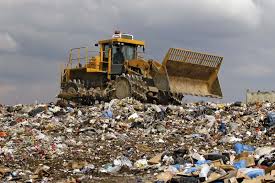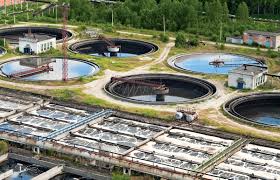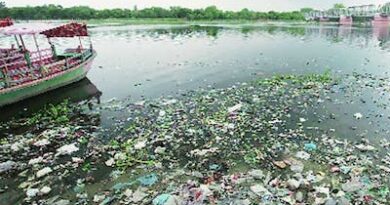Solid Waste Management Complete Guide
Solid waste is what you are truly disposing of when you dump your trash in the trash. Solid waste is a broad category of garbage that includes frequently used, unnecessary, and undesirable products.
Residential, commercial, industrial, agricultural, medical, and radioactive sources all frequently produce this kind of trash.
Solid waste is any material that is subject to the Resource Conservation and Recovery Act (RCRA) of the US federal Environmental Protection Agency (EPA).
Keep in mind that only waste products that strictly adhere to RCRA’s standards of solid waste are classified as such.
The EPA also creates regulations that specify which solid wastes fall into the non-hazardous and hazardous categories.
Understanding these definitions is crucial for governmental organizations and private companies that have been tasked with or wish to explore solid waste management. The same is true for those who produce these garbage.
This understanding is an essential first step in waste management programs because it enables all organizations to correctly identify whether the wastes they produce or treat are unregulated hazardous materials or not.
In North America, recyclable items like plastic, metal, glass, cardboard, and paper make up about 55% of the waste. The remainder is dumped in clean landfills. Even yet, recycling still accounts for 30% of landfill garbage.
Solid waste should be carefully managed regardless of its composition, place of origin, or potential for hazards. If not, it would harm the environment and endanger public health. Environmental planning for a region ought to take solid waste management into account.
Solid waste management’s goals are as follows:
There are tons of solid waste produced every day. Wastes like these need to be disposed of. However, if waste management is not handled effectively, an excess of improperly disposed of or processed trash will harm our environment and endanger public health.
As a result, each local government needs a reliable solid waste management strategy. The goal is to decrease or perhaps completely remove the harmful effects that generated waste material has on the environment and public health. Such initiatives should promote a higher standard of living for all members of society and assist economic growth.
The best possible conceptualization, planning, design, and implementation must also go into solid waste management. This will keep waste processing and disposal costs down and stop the accumulation of waste. Since landfills have a limited supply,
▪ Safeguarding the general health
▪ To recycle, reuse, and minimize
▪ Promoting the adoption of sustainable consumption and manufacturing practices
▪ Creation and advancement of green technologies
▪ Promoting the recycling sector
Collecting waste from its source is a crucial component of solid waste management. Additionally, it continues after collection. After that, waste should be moved safely to a transfer station, processing plant, incineration plant, or landfill.
Read Also : Complete Guide to Waste Recycling in your Region
For the sake of preserving environmental quality, public safety, and public health, proper collection is essential. The labor-intensive task accounts for about 3/4 of the entire cost of solid waste management in a specific area. Most of the time, the responsibility is given to public employees by the local government unit.

However, there are also private businesses that carry out the work, whether they are employed by the local government or are compensated by specific families, homeowner organizations, commercial establishments, or other facilities institutions.
Treatment and Disposal of Solid Waste
Treatment of solid waste frequently starts at the source of the trash. Many local government agencies have laws requiring generators to separate their trash first. Additionally, trash generators are urged to cut back on their waste generation by recycling, reusing, or composting.
Treatments and procedures could consist of the following;
▪ Composting – You can compost organic waste, including grass clippings and food scraps, right at the source. Compost includes worms, enzymes, or loam soil to aid in the natural decomposition process. Compost is the end product, and it can be used as fertilizer or a soil conditioner.
▪ Separation – In the final facility, waste materials may undergo additional segregation. To complete the segregation efficiently and fast, specialized equipment may be employed. To help with segregation, many facilities do, however, hire staff. The distinction between recyclable and non-recyclable materials is made.
▪ The Sterilization Process: Chemical or Mechanical – Before they may be disposed of securely, some solid wastes may need to undergo mechanical or chemical processing. Used fluorescent bulbs, for instance, need to be crushed in a drum that has been vacuumed.
The dangerous mercury from the bulbs is removed using a vacuum so it can be used again. After that, the broken glass is either packed for disposal or recycled as aggregate.
▪ Waste can be burned at an incineration facility through the process of incineration. These incinerators are built with numerous incineration chambers, allowing for the oxidation of even the gases released during the burning process.
A considerably cleaner gas is then discharged into the atmosphere as a result. Additionally, the oxidation process eliminates or decreases fly ash, which includes smoke, cinders, dust, soot, and other airborne pollutants.
▪ Waste-to-Energy Recovery (WTE) is a technique that uses the heat and steam produced by burning solid waste to power turbines inside an incineration plant. The electricity generated by these turbines is subsequently fed into the neighboring grid or used to power the factory.
Read Also : Complete Guide to Waste Removal Process in your Region
WTE systems cost more to construct and maintain than conventional incinerators do. To run the facility, certain tools are needed as well as qualified staff. But the drawbacks of WTE facilities exceed the advantages. In fact, WTE plants account for 80% of municipal garbage incinerators in the US.
After that, the waste products of these procedures are disposed of in landfills.
The Following are some solid waste management Agency around the world:
▪ Association of FCT Solid waste and cleaning contractors
▪ Enugu state waste management Authority
▪ Horry country Solid waste Authority
▪ Solid Waste Authority of Palm Beach country
▪ Delaware Solid Waste Authority
▪ The US waste management Agency
In conclusion, solid trash will always be a part of us as long as there is human activity. However, the good news is that even with solid waste present, we may live a better and cleaner life by acting responsibly and according to reasonable restrictions.



